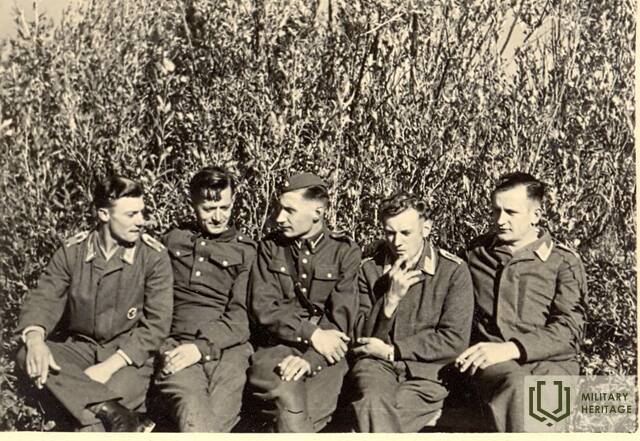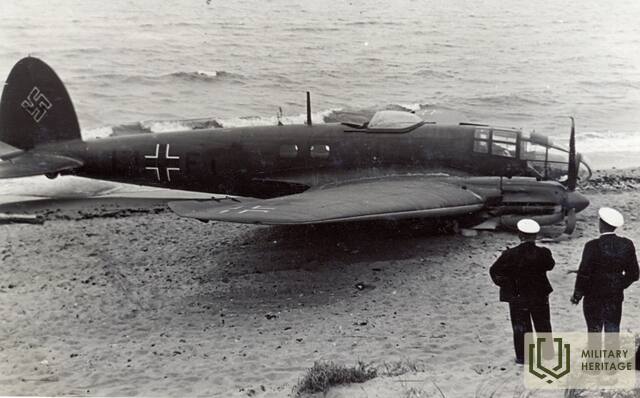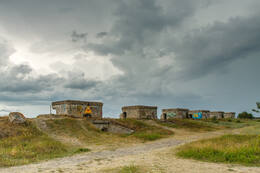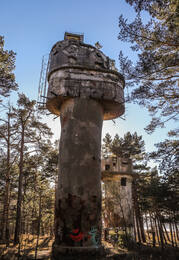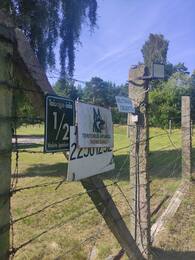Karosta - German He-111 landing place in 1939 on the beach of Liepaja
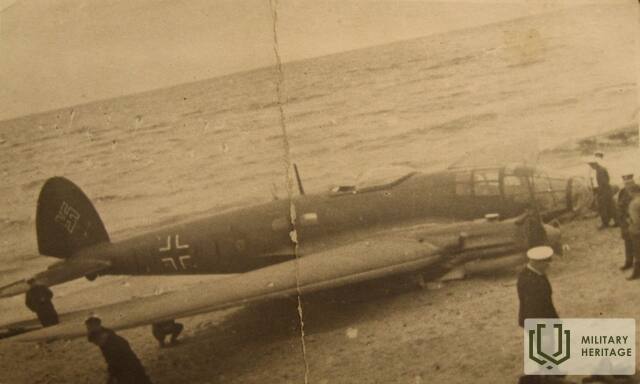
On 11 September 1939, a German Henkel He-111 bomber was raiding Polish cities when it went off course at night and made an emergency landing on Liepāja beach. This event is recounted in the memoirs of Vilis Zobens, a Liepaja resident and a liaison company officer of the Kurzeme Division. The landing site is not marked in nature. The approximate coordinates are N 56.59368° E 21.01598° - on the beach near the Northern Forts.
On the early morning of September 11, everyone was disturbed by the noise of a low-flying plane. As we went out, we saw a large, gray plane with black crosses on its wings. After flying around a circle, we landed on the beach. We went there. It had landed right on the seafront. 3 pilots had disembarked - two German officers and one instructor. When asked what had happened to the commander of the company, they replied that they had been on an attack on Poland, but had lost their way due to the damage to the compass and could not return to their base. We took them to the accommodation and showed them in one room. The war was over for those men, because by law they had to be declared. They received food from the officers' club, which they were not happy with and wanted to talk to the German consul in Liepaja. The consul arrived to decorate the next day and arranged the food as follows: the consul paid for the lunch ordered at the Liepāja hotel. It was brought by a jewelry soldier. I talked to a German motorcyclist instructor. He was very arrogant and a worshiper of Hitler. The commander of the jewelry also had all sorts of problems with them. We were all happy when they were transferred to Riga on October 1.
Vilis Zobens, a resident of Liepāja, a deputy officer of the Kurzeme Division, began his service in the Latvian Army in 1925 with the 1st Liepaja Infantry Regiment. During his service, he experienced the arrival of Soviet troops in Latvia.
Sword, V. Memoirs, Liepājas Vārds (Latvian People's Front). 1992
Related timeline
Related objects
Liepāja Northern Fort and Battery Nr.1 in Karosta
The Northern Forts are the best known and visually most impressive part of the Liepāja Fortress. Built by the Russian tsarist army in the late 19th century, their historical name is Fortress Battery No 1.
In November 1908, less than 10 years after its construction, the Liepāja Fortress ceased to operate, because its construction was acknowledged as a strategic mistake. Some of the cannons were dismantled and taken to the Kaunas Fortress in Lithuania, while others were remelted. Fortification structures were detonated twice in an attempt to destroy the fortifications. Elements surviving to the present day include artillery batteries not fully destroyed in the explosions and underground structures. Just like the Karosta, the Northern Forts were a closed military territory during the Soviet occupation. Visitors to the Northern Forts should be very careful. As in other places on the Latvian coast, the steep shore of the Baltic Sea in the Karosta is dangerous due to potential coastal landslides. Therefore, it is not allowed to walk under the ruins of the forts.
In the northern part of the fortress was located one of the four coastal defence batteries, Battery No.1. The battery was to house six 6-inch (152 mm) guns of the 1892 model of the Canet system, six 11-inch (280 mm) guns of the 1887 model and two 57 mm Nordenfeld anti-ship guns. Only the guns of the Canet system had a long enough firing range to withstand possible shelling by the German Navy. Thus, at the time of the liquidation of the fortress, the armament was only partially installed.
Karosta, the Military port of Liepāja (tour)
The Karosta is the largest historical military territory in the Baltics and occupies almost one third of the entire territory of Liepāja. The Karosta is a unique compound of military and fortification buildings on the shores of the Baltic Sea with a special meaning in the history and architecture of Latvia and the world. The Karosta features such military heritage sites as the North Pier and forts, the Redan, Karosta Prison, Karosta Water Tower, St. Nicholas Orthodox Maritime Cathedral, Oskars Kalpaks Bridge and others.
Liepāja coastal artillery battery No. 2
Among the many objects of Liepāja Karosta, Liepāja coastal artillery battery No. 2 is still the most mysterious place in Liepaja. In battery no. 2, the ammunition depots of the troops of the various existing powers were always installed.
Liepaja Fortress Battery No. 2 was built further from the coastline and was protected by a high rampart. The batteries were armed with 16 11-inch (280 mm) mortars of the 1877 model. After the fortress was dismantled, ammunition warehouses were set up here. Due to the danger of explosions, the territory was closed to the public and guarded for 130 years, but now there is an exposition about the activities of the 1st Kurzeme Division Headquarters in the years 1919-1940s, as well as photo evidence of the 1st Liepāja Infantry Regiment, the 2nd Ventspils Infantry Regiment and the Kurzeme Artillery. regiment.




